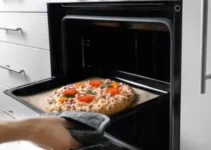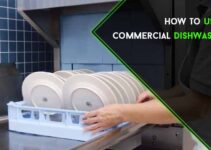A warped pan is an unhappy cooking companion. It's not just that it can be difficult to clean, or that food may stick to the bottom of the pan and burn before it is cooked through.
If a pan is warped, it can also create more trouble than it's worth. The wasted food could very well end up in the trash, especially if you are preparing delicate or expensive food that can't handle being bent or misshapen.
Now fixing a warping pan is good news for the earth, since the planet is already overburdened by trash. It can also help you save money. Check out our tips below on how to fix warped pan and get your solution today.
How to Fix a Warped Pan - Explained in Detail
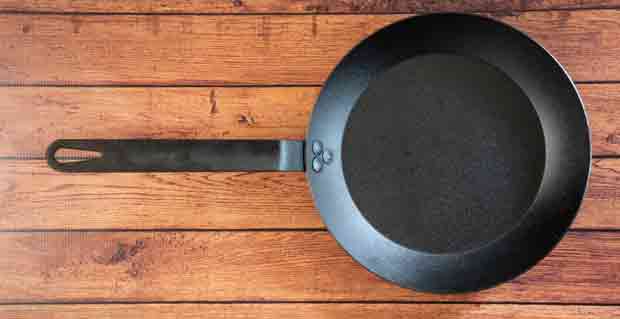
There are many ways to fix warped pans, though there is no one size fits all answer. Here are some general tips that may work for you:
Step 1: Check Out Your Manufacturer's Warranty
If you just purchased your cracked pan, be sure that the warranty has not yet expired. If it has and you're still under warranty, consider giving the manufacturer a call and see if they can send you a replacement item.
Step 2: Find the Right Material for Your Pan
If your pan is made from cast iron, you will need to use a different method for fixing a bowed pan than if the pan was made from carbon steel.
Different metals leave distinct marks on a range of surfaces, so what works for one type of metal may not work for another.
Step 3: Remove the Water from the Pan
Now the step in fixing a warped pot is to remove any water so you can take a closer look at what caused it to warp and how best to deal with the problem.
Step 4: Wash the Stainless Steel Pan Thoroughly
Before getting started, take some time to clean out your baking sheet or saucepan. Remove all grease and other debris that may be caught in the bottom of the pan.
There are many ways that you can resurface your stainless steel pans, but one of the most common is with baking soda.
This will make your stainless steel pans appear new again by gently rubbing off the surface of your pan.
Step 5: Place the Pan on an Electric or Gas Cooktop
One of the quickest and easiest ways to repair a warped surface is by placing it over a heat source.
The most powerful part of this solution is that you don't have to wait for your oven to heat up. Simply turn on the stove and treat your pan as you normally would.
Step 6: Put the Pan on a Durable Surface
Next, you will want to put your baking sheet or saucepan over a strong, durable surface. Using a pan trivet is the best option here.
If no such surface can be found, try putting a cold pan on a cold stove, and turning the heat up until the bottom begins to melt slightly. Now remove it from the burner and let the pan cool.
Step 7: Beat the Wood on the Bowed Side of the Pan
Next is to beat the bowed side of the pan against a flat surface. You should repeat this process several times and then check to see if it has started returning to its original shape.
Step 8: Let the Pan Sit Overnight
It can take several hours before a twisted pan will return to normal, if at all. Before continuing to restore your damaged pan, leave it overnight to let it rest. You may wake up in the morning with good news about fixing a crooked pan!
Here is More on What Causes Pans to Warp:
01) Exposed to Excessive Heat
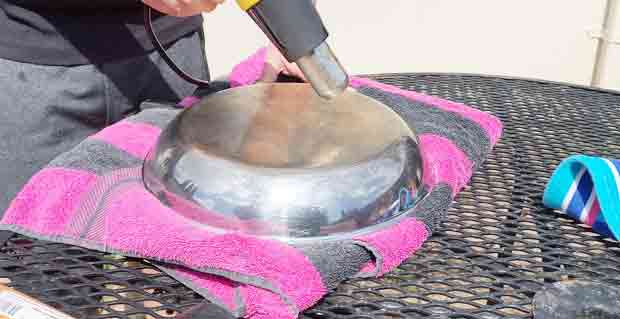
One of the most common causes of a cracked pan is heat. Over time, this type of stress on your cookware can cause it to deform.
This is especially true for commercial-grade ovens which are made with metals that have been pre-treated so they can stand up to the heavy use they will see in a restaurant setting.
02) Placed Near Fire or Fireplace
Fireplaces are another source of excessive heat which can damage your pots and pans.
When exposed to an open flame, the metal will expand faster than the wooden handle or other components that are made from different materials.
03) Not Padded Properly When Stacking Cookware
If you stack your pans on top of one another without adding any padding to protect the bottom, you may have warped pans on your hands.
This can become a problem when you try to cook with it as it will likely sit unevenly on a flat surface and lead to some bending or warping over time.
04) Authentic Material Not Used for Construction
If you have the cheaper, knock-off pan that is made from substandard materials, then it can crack or bend because of the quality of these products.
You are much better off investing in a solid cast iron pan as these types of materials are much stronger and will not crack even if it's exposed to high heat for an extended period of time.
05) Storing Pots and Pans in the Dishwasher
If you are using a dishwasher for cleaning your cookware, then you are at risk of warping it.
The high heat, harsh chemicals, and other factors that come into play will eventually cause the pan to warp or bend without proper care.
06) Using Metal Utensils or Other Heated Tools
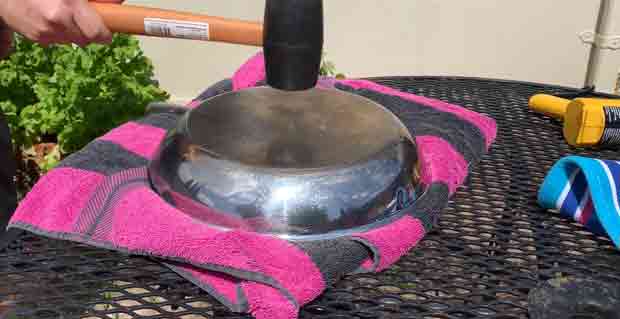
If you are using metal items or other tools on the pan, then it can lead to a bowed pan.
While this method may not be as effective as heating your cookware over the stovetop, it's worth a try if you have no other options at your disposal.
07) Leaving Pan Sitting Overnight
Leaving a pan on the stovetop overnight is another way to ruin your cookware. The residual heat from the burners will transfer to the metal, causing it to expand and eventually create warping in your pans over time.
08) Use Dishwasher or Cleaner Chemicals
Finally, be sure to avoid using harsh dishwasher chemicals or cleaning products. These will cause irreparable damage to your cookware and can ruin it over time.
The best course of action is to use gentle soap and water for regular care and maintenance. This can help keep your pan looking new for longer without worrying about warping issues.
Tips for Preventing Warping
If you are conscious about how your pans are stored, then there are some steps you can take to prevent warping. These steps include:
01) Never Stack Pans on Top of One Another
It's best if you leave them flat inside one another with a few sheets of paper towels in between each pan for extra protection.
02) Use Padding When Stacking
Adding padding on the top of your pans will give you some added protection against heat, scratching, and warping.
03) Heating Your Pan at Medium-High Temperature
For most cooking tasks, it is best to use medium-high heat as this setting will suit even the toughest meal that you're cooking.
Be sure to use cast iron pans as these are the most resistant to warping issues.
04) Avoid Heating Only on One Side
If you can avoid it, do not heat your pan on one side or leave it there for too long without checking the temperature. This will lead to hot spots and can cause pans warp over time.
05) Avoid Storing in Dishwasher or Cleaner Chemicals
While it's tempting to use dishwasher products to clean your pans, be sure to avoid them at all costs. These chemicals are very harsh and will ruin your cookware with longer term use.
06) Do Not Use Metal Utensils or Heated Tools
Using metal utensils or other heated tools on your cast iron pan will cause irreparable damage over time. This is one of the quickest ways to ruin your cookware and lead to some early malfunctions.
07) Store Pans Flat When Not in Use
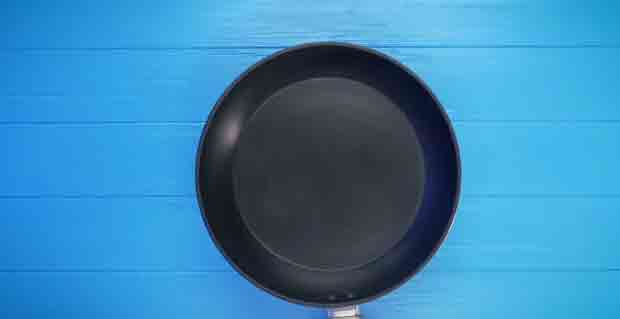
When you are not using your cookware, it's best to leave them in a flat position on the countertop. This will help keep the pans from warping out of shape when there is no weight placed upon them.
As such, try and avoid storing them in the cabinet or on the top of your stove for longer periods of time when not in use.
A Few Additional Factors:
i) Frying Pans with Warp Resistance
Certain frying pans are more resistant to warping than others. If you are looking for a good pan to use in your kitchen, then you will want to look for one that has some pans from warping resistance. One of the best options for this is cast iron.
Cast iron is great because it can withstand higher heat without becoming warped. It does take longer to heat up, but it's worth the wait if you want cookware that lasts a long time and won't deform over time.
ii) Baking Sheets with Warp Resistance
If you don't want your baking sheets to crack over time, then be sure to only use the ones that have been specifically designed for this purpose.
Some manufacturers will include a seal of approval to indicate that the product has been tested and is not likely to warp.
iii) Warped Pans Cause Health Problems
It's a good idea to keep your cooking surfaces clean from any debris or oils from previous cooking. Dirty pans can lead to bent pans, which have been found to cause health problems especially for those sensitive to toxic chemicals and other particles coming from the pans warp.
If you've been cooking on cracked pans for a long time and haven't noticed any problems, then it's likely that your health is good enough to avoid getting sick from the chemicals and fumes that these pans release.
FAQs
01. Is It Bad To Heat a Pan without Anything in It?
It's not really a good idea to use your pan without anything in it as this will cause damage likely to warp.
You'll want to avoid those types of pans that don't have warping resistance as these are specially designed for cooking without anything inside them.
02. What Causes Pans to Warp in the Oven?
When you heat a pot or your oven, these can release chemicals from the pans that may end up warping the surface.
In most cases, this is from cooking foods with high moisture. Vegetables and other types of food can create a lot of steam as they cook and this leads to a warped surface over time.
03. What Is the Warping Effect of Carbon Steel Pans?
Carbon steel cookware can withstand high heat without warping, but they are also more susceptible to rusting over time.
If you look after your carbon steel pan, then this can last a long time without having any issues with warping.
04. Is It Possible To Unwrap a Cast Iron Pan?
Yes, you can repair a cast iron pan that is likely to warp. However, it may take a while and will require that you work slowly to adjust the angle.
If your cast iron pan is only slightly warped, then this process should happen over time as you use it.
05. What Is the Best Way to Season a Cast Iron Pan?
There are a few different ways that you can season cast iron pans, but one of the best is to use flaxseed oil as this will make your cast iron really smooth.
You will want to apply the oil with paper towels and rub it all around the surface of your pot, ensuring that you completely cover each part.
Allow this to sit overnight before heating up your cast iron pan or oven for an hour at 350 degrees Fahrenheit or 177 degrees Celsius.
06. Are Warped Pans Suitable For Induction?
If your pan is warped and it is induction compatible, then the metal will only be able to make contact with part of the induction stove.
This means that not all parts of your cookware will receive the induction heat energy and may cause some problems as a result.
07. How Does All Clad Cookware Work?
All Clad cookware is made of three layers: the aluminum core, an outer stainless steel layer, and a magnetic stainless steel on the bottom.
This allows for you to cook with induction stoves as the All Clad cookware has been designed to work perfectly with such cooking surfaces.
08. How Come My Frying Pan Isn't Flat?
Because a pan is curved, this means that it can't be very flat. This applies to almost all frying pans as they have been shaped with a curve.
This allows the surface to have more contact with foods and prevents them from just sticking to the bottom of a pan without cooking properly.
09. How Do I Fix a Ruined Non-Stick Pan?
It's possible to fix non-stick cookware that is ruined. The key here is just to take your time and work slowly with the magnetized side of the bottom of your frying pan.
Once the material is aligned, then you can heat up your pan for a few minutes before trying it out again.
10. What Is the Lifespan of Frying Pans?
It's hard to say what the lifespan of frying pans will be, as this really depends on how you look after your cookware.
However, most people report that they have had their non-stick pots for about five years although some have lasted more than ten.
If you take good care of your stainless steel non-stick pans and avoid using metal utensils on them, then you should be able to get a long service out of these types of pans.
Final Thought
A lot of people have warping pans in their kitchen. This can be a frustrating problem, but there are some easy ways to fix it so you don't have to throw your pan away. You should have found some good ideas in this article if you were looking for a way to fix warped pans.

![How to Prevent Springform Pan from Leaking [Explained] How to Prevent Springform Pan from Leaking [Explained]](https://mykitchening.com/wp-content/uploads/2021/09/How-to-Prevent-Springform-Pan-from-Leaking-211x150.jpg)
